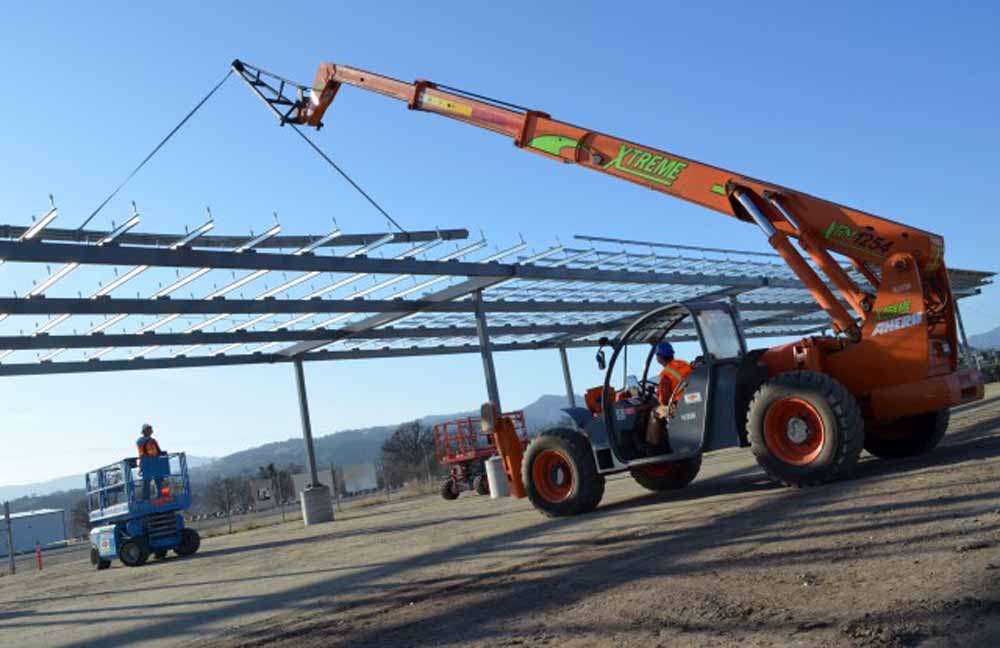The United States Army Climate Strategy opens with a quote from Secretary of Defense Lloyd J. Austin III: “We face all kinds of threats in our line of work, but few of them truly deserve to be called existential. The climate crisis does. Climate change is making the world more unsafe and we need to act.”
Within a broad range of actions to preserve the Army’s warfighting capabilities, and also lead by example, are several related to renewable energy.
By 2030, the Army is “committed” to using “100% carbon-pollution-free electricity” at its installations, by building new renewable energy projects and purchasing clean electricity. As an example, the document shows a solar canopy that shades most of the vehicles at Fort Hunter Liggett in California, which is one of six pilot sites to become net-zero energy.
By 2035 the Army aims to install a microgrid on every installation, with investments in “onsite, backup” renewable generation and large-scale battery storage. The Army will pursue enough renewable generation and battery capacity to “self-sustain its critical missions” on all its installations by 2040.
The Army aims to reduce greenhouse gas emissions from all Army buildings 50% by 2032, compared to a 2005 baseline. Light-duty non-tactical vehicles would be electric vehicles by 2027, and all non-tactical vehicles would be EVs by 2035.
To preserve its acquisition capabilities, by 2025 the Army aims to analyze all its supply chain Tier 1 sources and contracts for climate change risks and vulnerabilities. By 2028, the Army aims to develop plans, policies, and contracts to ensure supply chain resilience.
To update its training, the Army aims to incorporate climate change topics in leader development and workforce training, “no later than 2028.”
“For today’s Soldiers operating in extreme temperature environments, fighting wildfires, and supporting hurricane recovery, climate change isn’t a distant future, it is a reality,” said Secretary of the Army Christine E. Wormuth, in a foreword to the document.
As an example of the hurricane recovery work of the Army National Guard, the document notes that soldiers assigned to the Louisiana Army National Guard transported flood relief supplies in southeast Louisiana, after more than 30 inches of rainfall caused severe flooding there, as part of a mobilization of more than 1,000 personnel.
After stating that “the Army will continue to lead by example,” the strategy document adds in boldface that “The Army’s core purpose remains unchanged: to deploy, fight, and win the nation’s wars by providing ready, prompt, and sustained land dominance as part of the Joint Force.”
This content is protected by copyright and may not be reused. If you want to cooperate with us and would like to reuse some of our content, please contact: editors@pv-magazine.com.








By submitting this form you agree to pv magazine using your data for the purposes of publishing your comment.
Your personal data will only be disclosed or otherwise transmitted to third parties for the purposes of spam filtering or if this is necessary for technical maintenance of the website. Any other transfer to third parties will not take place unless this is justified on the basis of applicable data protection regulations or if pv magazine is legally obliged to do so.
You may revoke this consent at any time with effect for the future, in which case your personal data will be deleted immediately. Otherwise, your data will be deleted if pv magazine has processed your request or the purpose of data storage is fulfilled.
Further information on data privacy can be found in our Data Protection Policy.